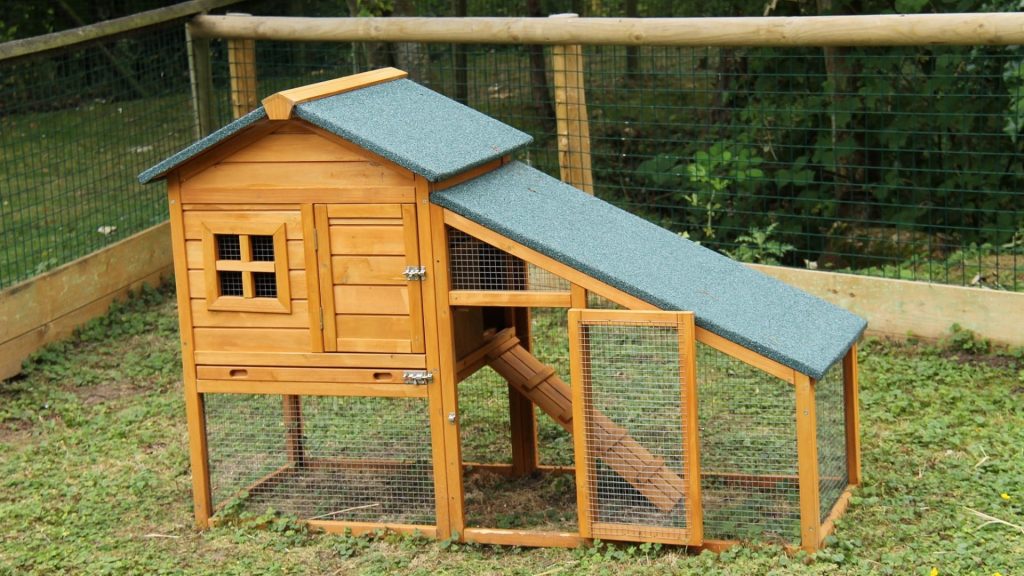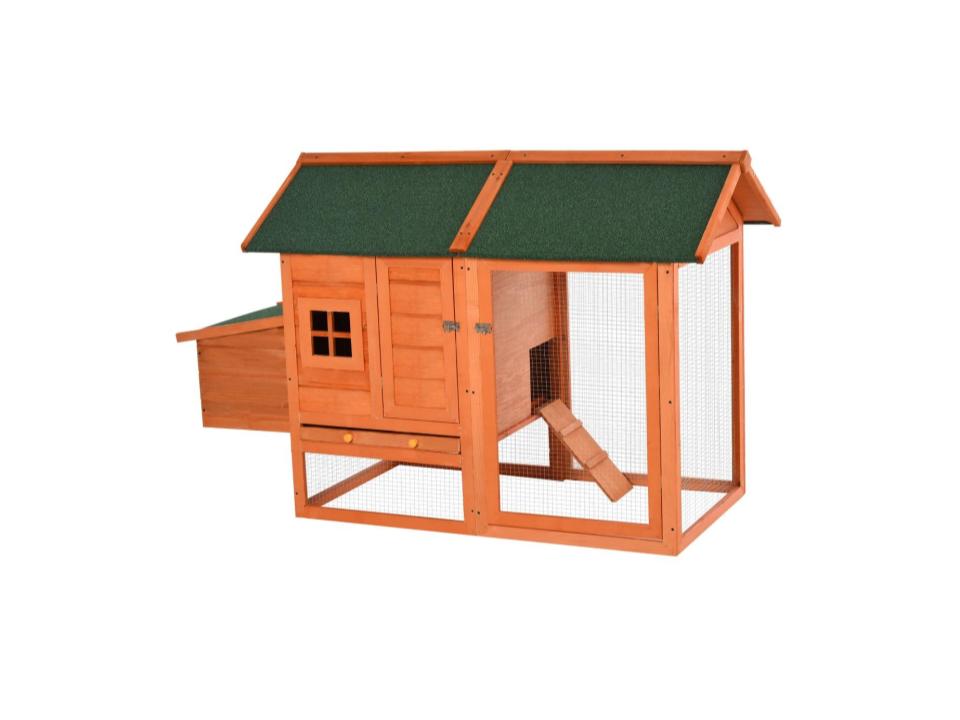Building chicken coops raised off the ground has so many benefits and reasons. If you are planning to buy a coop, then one common question must jog into your curious mind why are chicken coops off the ground? Placing the coop directly on the floor can create diseases and bacteria like mold, fungus, and larvae. As hens drop discharges very frequently, it is evident that the surface remains wet, and the moist texture is the ideal place for bacteria. These diseases can lead you to financial damage and hassle.
Off-ground chicken coop helps to maintain sufficient air circulation and the cleaning easier. Proper cleaning and good air circulation can decrease the chances of diseases and multiple troubles. That is why raised chicken coop is a very trendy feature among chicken raisers. As a result, the raised chicken coop has become a popular feature among chicken owners.
How Much Ground off Is Ideal for Chicken Coops?
For a variety of reasons, a chicken coop should be elevated at least 1 foot to 3 feet from the ground, and the rest more is your choice. A raised coop allows air to circulate, minimizes the flood damage in flood-prone areas, and keeps predators out.
Let’s dig into the reason in-depth.
Plenty of Air Circulation and Temperature Adjustment
Precise air drainage is mandatory to keep the chickens healthy and the coop in better condition. Compatible circulation keeps the coop’s ground dry, which helps to get a bacteria-free area. The bedding remains good for an extended period due to sufficient air drying. After every water cleaning, the air dry will make the drying process more manageable due to good air circulation. During summer, the floor remains cool as it rises from the ground detached from the floor heat, so the gap doesn’t hold hot air.
Safety Distance from Predators
Different living things like snakes, foxes, and rats are prevalent in open spaces. They carry different types of living germs and bacteria on their skin which are easily transmissible.
Moreover, some of them can quickly eat up your chickens and eggs all alone. If you do not place your coop above the ground, these predators can quickly get into your coop if it has any whole or unwanted easy small entree for them. But if you maintain distance from the ground, it will make them harder to get entry as they are less interested in ground-off things.
Fungal Damage Inside the Coop
Fungal damage inside the coop is one of the common problems among chicken owners. When the coop is directly placed on the ground, it’s possibly unable to maintain a dry floor and causes slow fungal damage. Maybe you think the litter will keep the ground body dry, but here is the wrong misconception. The waste can keep the inside upper area dry. But when it rains or snow, the humidity can create dampness and fungal damage due to a lack of good air circulation. The raised coops are generally aloof from being infected by fungal damages. So, raising off will ensure less or no fungal damage.
Effortless Cleaning Process
Ground off coops is easy to clean as you can freely bend a bit and clean the litter, or by standing. You can clean up the floor with a small spade which will take a maximum of 5 minutes or less if you have a small to average size coop. Always clean the floor with water after changing every litter.
Free from Flood Attack
If you live near the river, you must have experienced flooding during the rainy season. Raised coop can save your chickens during the flood, and you don’t have to change their living place for that specific time. Here, I would like to point out that if you have experienced flooding in your area, you should keep the distance more than 2 feet. You can apply bricks for raising temporarily if you think you will decrease the length after the season.
Extra Space under the Coop
You can turn the lower division of the coop into a storage area. In this situation, you can cover the area with a net or fence and later can use it to keep your equipment or resources. Unless you can’t maintain proper cleaning under the open space, so better, you don’t make it storage. Unclean and dark places are favorites for small predators, and it will also block air circulation.
Several Extra Tips Will Help You More.
- In winter you can use sand as bedding as it can keep the temperature balanced
- You can set the drinkers and feeder underneath the shade
- Covering the under area will ensure the protection for your birds from owls, or rats.
- Cover the coop’s ground holder with metal or steel, and it will increase the durability of your coop when it rains or snow.
- Use solid rooftop; it will keep safe your chickens from rain and heat
- Use net ventilation system
- You can use breeze blocks to raise the level
FAQ
How to clean a chicken coop?
You can clean it by using any method. But add vinegar with water when you clean the coop. It helps to disinfect the floor entirely. Apply the same portion of water and vinegar to create the mixture. You can also clean the feeder and drinker with this cleaning mixture. Never apply bleach for any cleaning process related to chickens. It is enough to slaughter them.
After the cleaning try to maintain an air-dry process. Keep the coop’s door open so that air passes precisely. Put the feeder and drinker under direct sunlight. Remember after changes of each bedding you should clean the coop.
What size chicken coop is suitable?
It depends on the number of your chickens and your backyard space. If you are planning for a big farm, definitely you will need a big one. But if you are planning for a personal egg collection, then a small one will be the most suitable for you.
How often should the litter change?
Generally, it depends on the condition and the type of bedding. When you see the litter is wet and leaking water, it is necessary to change the waste immediately. But on a 6 to 4 inches litter surface, you can change it every six months. Scoop the upper layer litter with a shovel every month and apply a new one every 6 months. You can also use a thin layer which you have to change regularly.
Is a dust bath helpful for the chickens?
Chickens love dust baths, and they become fluffy when they see dust. After a quick dust bath, the chicks are as clean as a human after a shower. The dust acts among their feathers to keep parasites at bay.
When is the suitable time to feed the chickens?
There is nothing specific but to try to maintain a routine. However, it is usual practice to feed birds between 6-7 a.m. The heat stress of nutrition digestion starts before the early afternoon daily elevated temp with early morning feeding. Growing birds could also be fed in the afternoon or evening.
What type of flooring is good?
To keep the floor dry, you can use pine shavings as bedding. The most common flooring cover, and it’s cheap, easy to lay, absorbs moisture efficiently, and cleans up quickly with minimal waste. I suggest laying it down a few inches deep on the coop floor, then covering it with straw.
Final words
Constructing your chicken coop can be a daunting endeavor, especially if you have no prior experience with construction. You can determine the elevation length according to your need. If you have to purchase a large coop, such as a walk-in shed with a wood floor, you should try to elevate it on concrete blocks. It doesn’t have to be extremely high, just high enough to allow some airflow and prevent rodents from nesting beneath it.
If you’re concerned about your chickens laying eggs beneath your huge coop, block it off so they can’t get below it. Air circulation and many other discussed benefits ensure that why chicken coops are always elevated? So elevating coops from the ground is the best choice, and you will not regret it.



